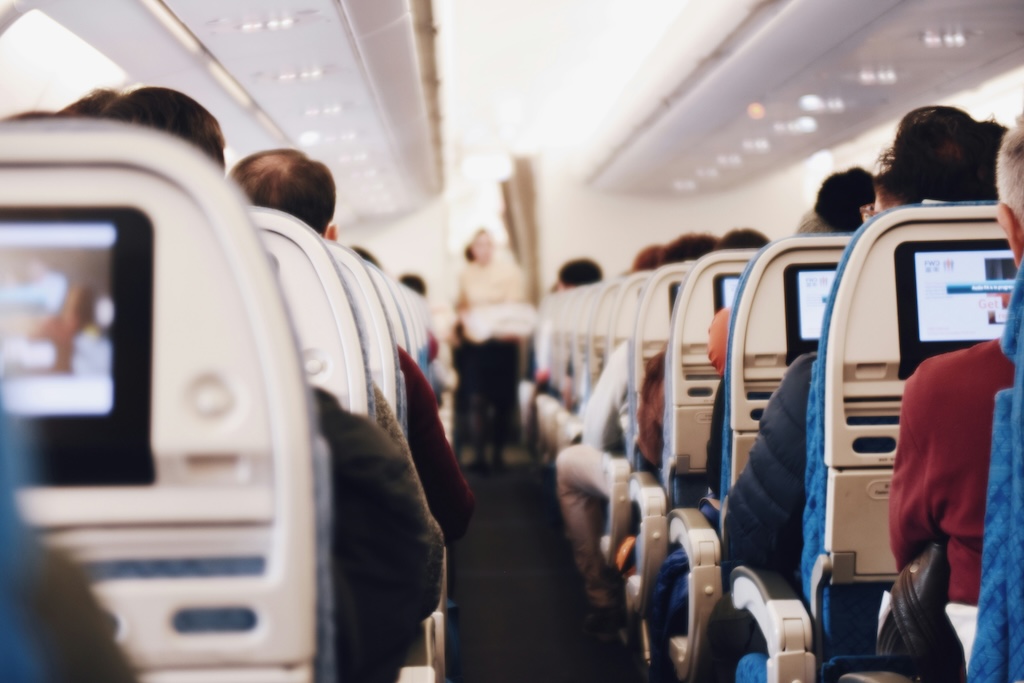
When Do Flight Prices Drop? Tips for Finding Cheap Flights

When do flight prices drop? The answer requires a little bit of luck and strategic timing. Here’s how to land the best deal.
Booking flights is like playing a game of cards. The stakes are high, and everyone’s trying to outsmart the dealer — and the airlines shuffle prices at every turn. One second, you think you have the winning hand with an unbeatable deal. Hesitate, and the airline pulls an ace from its sleeve, sending prices soaring before you can make a move.
Everyone has a theory about when to book flights and time the cheapest fare. Buy tickets on a Tuesday, purchase exactly three months before departure, and erase your cookies so websites don’t see you surfing for cheap flights.
While luck plays a role, there’s some logic to securing the best flight prices. Airlines use algorithms to fluctuate prices and attract buyers depending on demand.
So when do flight prices drop? Let’s dive into the best tips and tricks so the next time you book a flight, you play your cards right.
The Best Time to Buy Plane Tickets
Airlines rely on algorithms to set airfare prices, and you don’t have to be a software engineer to crack the equation and find the best day to buy airline tickets. There’s plenty of data-driven information available to guide your search.
Here are some basic equations to help you land the best deal:
1. Seasonal Trends
Why are plane tickets so expensive during the summer and certain holidays? Ticket prices fluctuate based on basic supply and demand principles. If a ticket price seems unusually high, it’s likely lots of other customers want to travel on the same flight — and seasonality plays a key role in demand.
Airfare tends to increase in the summer when kids are out of school and the weather is warmer. That’s why July and August are known as peak travel season. Understanding this pattern can help you identify the most cost-effective times of the year. According to data from CheapAir, winter is the cheapest time to travel (with the exception of holidays), followed by spring, summer, and fall.
2. Holidays
Airlines depend on big holidays to turn profits, which is why ticket prices tend to surge around Easter, Thanksgiving, and Christmas. To maximize savings, consider traveling on less popular days surrounding the holiday dates. For example, rather than traveling on December 23rd, check flights for December 20th or 21st before the massive crowds begin to fly home for the holidays.
3. Booking Windows
Timing is everything, and booking a flight is no different. Airlines often adjust their pricing based on how far in advance it is from the flight in question. Generally, booking a roundtrip ticket a few months ahead of time can secure a better deal than waiting until the last minute.
This is often called the Goldilocks Window — the moment that airline prices are “just right” because airlines want to encourage potential customers to buy up seats. Too far ahead, and the airlines don’t have an incentive to lower prices, and too close to the date, and those companies know they can ask more from desperate flyers.
4. Overall Volatility
The airline industry is as volatile as unexpected turbulence. Prices can fluctuate due to several external factors, like rising jet fuel prices, global inflation, and demand for air travel — all of which can happen at any time of year. Setting up price alerts from travel websites, Google Flights, or apps can help you catch a dip in prices or decide to wait out an unusual price surge.
The Best Days of the Week To Buy Airline Tickets
Before the internet and complex algorithms, airlines used to manually upload flight deals. Nowadays, it’s all automated with advanced technologies. Even if your jet-setting travel partner is convinced Tuesday is the day to buy a ticket, there’s way more to finding deals than settling on one day of the week.
Airlines base their prices on probability and fluctuate them based on predictable booking windows and seasonal demands. The day of the week doesn’t greatly impact the price of tickets since travelers are unlikely to purchase on specific days.
However, the day of the week of the flight does impact the price. Fridays and Sundays, when people travel the most, garner the highest prices. Tuesdays and Wednesdays, when people are typically at work, are when fares drop to their cheapest.

Do Flights Get Cheaper Closer to the Date?
There’s a long-standing travel myth that flights get cheaper as the departure date nears because airlines desperately lower the price to fill more seats. But airlines tend to save their highest fares for last-minute purchasers, especially on popular routes. While there’s a chance you catch a deal to upgrade your seat or a last-minute discount on underbooked flights, it’s a big (and potentially costly) gamble.
Booking a few months in advance is the better strategy for ensuring better rates and a window seat. It’s the sweet spot when airlines want to fill the plane and increase demand. And planning ahead makes for less stress — both for you and your credit card.
How Far in Advance Should You Book Flights?
Airlines use predictable booking windows to set prices. These windows start nearly a year prior to departure up to the day of your flight, and hitting the right one can mean hundreds of dollars in potential savings. Here’s a quick guide:
Early Birds: 200–300+ Days in Advance
How far out can you book a flight? There isn’t a set date. Airlines release flight details anywhere between 10–12 months ahead of the departure date. Although you might find a flight 11 or even 12 months prior to take-off, it’s best to stay within the 7–10-month range to choose from many different airlines instead of just a few. This booking window is for early planners who want first dibs on itinerary and seating and are willing to pay slightly more for extra flight ticket options.
Play It Safe: 150–199 Days in Advance
Half a year before take-off still counts as early planning. While you won’t have the same number of open seats to choose from as the early birds, you’ll only pay a little more than the prime booking window, and you won’t sacrifice ample flight options.
Prime Time: 50–149 Days in Advance
When a flight is a few months shy of departure, airlines have a solid handle on the demand. Typically, this prime time is when flight prices are at their lowest because airlines aim to fill the bulk of seats. If prices drop significantly, it’s during this sweet spot, so when you find a good deal, it’s probably worth purchasing.
Rising Tides: 14–49 Days in Advance
Airfare usually rises as the best seats sell out. If you wait until this two-week to month-and-half booking window, you’ll likely pay more and get stuck with a middle seat.
You Better Book: 7–13 Days in Advance
One to two weeks ahead of time is a little cheaper than booking last minute. If you have to book close to takeoff, it’s better to gamble on this booking window than wait for a miracle deal the week of the flight.
Last Pick: 0–6 Days in Advance
You have to buy this flight, and the airline knows it. Airfare can be hundreds of dollars more the week of a flight. Always avoid booking last-minute flights unless it’s an emergency or you’re a business traveler with a company credit card.
Average Flight Cost in the U.S.
The average domestic flight cost about $382 dollars at the beginning of 2023. But remember, flight prices fluctuate for several reasons, like popularity and frequency — not just flight distance.
High demand airports, like San Francisco, Dallas-Fort Worth, and JFK, exceed the national average, and less frequented regional airports like Fort Lauderdale, Orlando, and Burbank fall below. Smaller airports close to larger metropolitan areas (like San Bernadino instead of LAX or Fort Collins instead of Denver) also tend to have lower prices. But what you win in price deals, you lose in frequency of flights and full-service carriers.
Traveling Around the U.S.? Finding a Landing Near You
While you navigate flight deals, let Landing cover the apartment hunt. Whether you’re a digital nomad in the U.S., a traveling nurse, or military personnel on assignment, Landing has fully furnished apartments and flexible agreements to help you find a home base anywhere. Eat barbecue in Austin, see the ocean from Seattle, or hike from Denver — visit the cities calling you home.
Want adventure at a lower price? Use Landing Standby — a membership that gives you access to all of Landing’s fully furnished homes at a discount. Settle into available properties wherever you want, with at least three days’ notice to choose a new place if someone else needs to move in.








